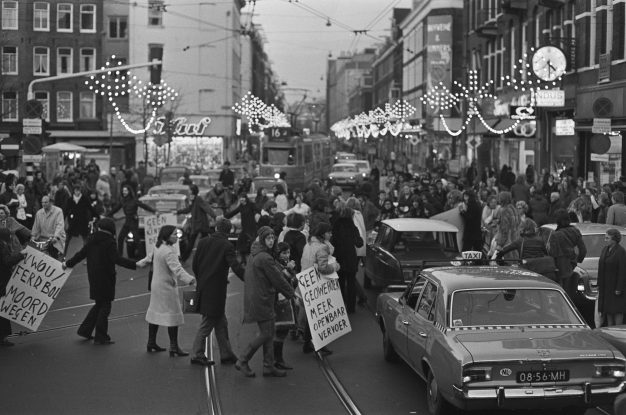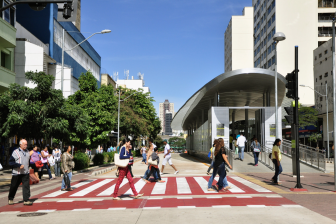
Revolutionising urban spaces: How ‘Stop de Kindermoord’ has influenced Dutch city planners
In the intricate tapestry of urban planning, certain movements stand out as transformative epochs, reshaping cities and redefining societal priorities.
Among these, the Stop de Kindermoord movement in the Netherlands occupies a significant place, heralding a paradigm shift towards child-friendly urban design.
Born out of concern for the safety and well-being of children in increasingly congested and car-dominated cities, the movement left an indelible mark on Dutch urban planning policies, fostering the creation of vibrant, inclusive, and sustainable urban environments.
Translated quite simply as ‘stop the child murder’, the term Stop de Kindermoord is undeniably emotional and continues to carry a weighty connotation, symbolising as it does the perilous conditions faced by children in urban settings. This movement first emerged in the 1970s, a response to the growing realisation that Dutch cities were becoming, if we are being diplomatic, inhospitable, but actually just downright dangerous for their youngest inhabitants.
A fundamental reimagining of cityscapes
Congested streets, soaring traffic volumes, and a dearth of green spaces painted a bleak picture of urban life, prompting parents, activists, and urban planners to rally for change.
At its core, Stop de Kindermoord movement was a grassroots endeavour, driven by a shared sense of urgency to reclaim urban spaces on behalf of children. But this wasn’t just about reducing accidents, it was nothing less than a crusade for a fundamental reimagining of cityscapes, placing children’s needs and rights at the forefront of urban planning agendas. Communities were galvanised, sparking conversations and the mobilisation of support for a more humane and child-centric approach to urban design.
The influence of the Stop de Kindermoord movement on Dutch urban planning policies was profound, ushering in a series of initiatives aimed at fostering child-friendly cities:
- Traffic calming measures: Dutch cities pioneered innovative traffic calming techniques, ranging from reducing speed limits and installing traffic islands to implementing shared spaces and prioritizing pedestrian zones. These interventions aimed to create safer environments for children to navigate independently, reclaiming streets from the dominance of cars and fostering a sense of community.
- Expansion of green spaces: Recognising the crucial role of nature in child development, urban planners prioritized the creation and preservation of parks, playgrounds, and green corridors. These green spaces not only provided opportunities for recreation and exploration but also served as essential sanctuaries amidst the urban jungle, promoting physical and mental well-being for children and adults alike.
- Promotion of active transportation: Central to the ethos of Stop de Kindermoord was the promotion of cycling and walking as viable modes of transportation. Dutch cities invested in infrastructure improvements, including dedicated bike lanes, pedestrian-friendly pathways, and safe routes to schools, encouraging sustainable mobility choices and reducing dependence on cars.
- Integration of child-centric design: From the design of public buildings to the layout of residential neighbourhoods, architects and planners embraced principles of child-centric design, prioritizing safety, accessibility, and playfulness. Spaces were reimagined to accommodate the diverse needs of children, fostering social interaction, creativity, and a sense of belonging.
The legacy of Stop de Kindermoord is as strong as ever, continuing to reverberate through the urban fabric of the Netherlands, and evident in the human-scale design, vibrant public spaces, and emphasis on sustainable mobility that characterise Dutch cities today. However, the journey towards truly child-friendly cities is ongoing, marked by continual innovation, collaboration, and adaptation to evolving societal needs and challenges.
As Dutch urban planners chart the course for the future, they remain committed to the principles espoused by those 70s trailblazers, seeking to further enhance the livability, inclusivity, and resilience of their cities. From embracing smart city technologies to fostering community engagement and participatory design, Dutch cities are at the vanguard of urban innovation, striving to create environments where children can thrive and flourish.
The ‘Kindermord’ movement remains a shining beacon to the transformative power of collective action in shaping the built environment. Its influence transcends borders, inspiring cities worldwide to rethink urban planning paradigms and prioritise the well-being of their youngest residents.
As society navigates the complexities of the 21st century urban landscape, the lessons of this hugely influential movement serve as a guiding light, reminding us that cities should be places where children can grow, learn, and play freely, enriching the lives of all who inhabit them.




